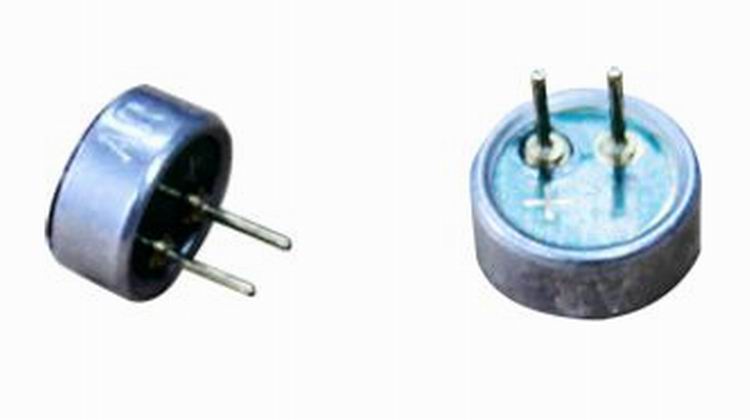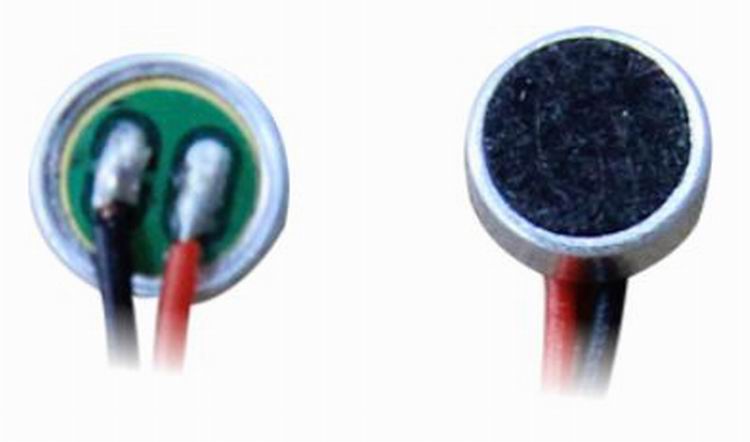A touch screen is an input device of a computer. Unlike a keyboard and a clickable mouse that can realize input, it allows users to make selections by touching the screen. A computer with a touch screen requires little storage space, few moving parts, and can be packaged. The touch screen is more intuitive to use than the keyboard and mouse, and the training cost is also very low.
All touch screens have three main types of components. A sensor unit that handles the user's selection; a controller that senses and locates the touch, and is driven by a software device that transmits touch signals to the computer operating system. There are five technologies for touch screen sensors: resistive technology, capacitive technology, infrared technology, acoustic wave technology or near-field imaging technology.
The resistive touch screen usually includes a flexible top film, and a layer of glass as the base layer, and is separated by insulating points. The inner surface coating of each layer is a transparent metal oxide. The voltage has a difference in each diaphragm. Pressing the top film will form an electrical contact signal between the various resistance layers.
The capacitive touch screen is also made of transparent metal oxide as a coating, which is bonded to the single-layer glass surface. It is not like a resistive touch screen. Any touch will form a signal. A capacitive touch screen needs to be touched directly with a finger or with a conductive stylus. The capacitance of the finger, or the ability to store charge, can absorb the current at each corner of the touch screen, and the current flowing through these four electrodes is proportional to the distance from the finger to the four corners, thereby obtaining the touch point.
Infrared touch screen is based on light interruption technology. Instead of placing a thin film layer in front of the display surface, it sets an outer frame around the display. The outer frame has a light source, or light emitting diode (LED), on one side of the outer frame, and the light detector or photoelectric sensor is on the other side, forming an infrared grid that crosses vertically and horizontally. When an object touches the display screen, the invisible light is interrupted and the photo sensor cannot accept the signal, thereby determining the touch signal.
In the acoustic wave sensor, the sensor is installed at the edge of the glass screen to send ultrasonic signals. Ultrasonic waves are reflected through the screen and accepted by the sensor, and the received signal is weakened. In surface acoustic wave (SAW) signals, light waves pass through the surface of the glass; while guided acoustic wave (GAW) technology, sound waves pass through the glass.
A near-field imaging (NFI) touch screen consists of two thin glass layers with a transparent metal oxide coating in the middle. Applying an AC signal to the lead coating creates an electric field on the surface of the screen. When the finger, whether to wear gloves or not, or other conductive stylus touches the sensor, the electric field is disturbed, and the signal is obtained.
With the increasing use of computers as a source of information, touch screens, because of their ease of use, ruggedness, fast response, and space-saving advantages, have made system designers increasingly feel that using touch screens has considerable advantages. The touch screen has only appeared in the Chinese market for only a few years. This new multimedia device has not been touched and understood by many people, including some system designers who are planning to use the touch screen, and they all regard the touch screen as optional From the perspective of the popularity of touch screens in developed countries and the current stage of China's multimedia information industry, this concept also has certain universality. In fact, the touch screen is a device that changes the multimedia information or control. It gives the multimedia system a new look and is a very attractive new multimedia interactive device. The system designers in developed countries and the system designers who are the first to use touch screens in China already know clearly that touch screens are no longer optional for computers in various application fields, but are indispensable devices. It greatly simplifies the use of the computer. Even people who know nothing about the computer can still handle it, making the computer show more charm. Solved the problem that the computer in the public information market cannot solve.
The three main types of touch screens are: resistance technology touch screen, surface acoustic wave technology touch screen, and capacitance technology touch screen. Each type of touch screen has its own advantages and disadvantages. The key to understanding which type of touch screen is suitable for that occasion is to understand the working principle and characteristics of each type of touch screen technology. 1. Resistive technology touch screen The main part of the resistive touch screen is a resistive film screen that fits very well with the surface of the display. This is a multi-layer composite film. It uses a layer of glass or hard plastic plate as the base layer. Metal (ITO indium oxide, transparent conductive resistor) conductive layer, covered with a layer of hardened outer surface, smooth and scratch-resistant plastic layer, its inner surface is also coated with an ITO coating, there are many small between them (Less than 1/1000 inch) transparent isolation points separate the two conductive layers. When a finger touches the screen, the two conductive layers are in contact at the touch point. The controller detects this contact and calculates the (X, Y) position, and then operates according to the method of simulating a mouse. This is the most basic principle of resistance technology touch screen. Since the resistance screen entered the market, it has occupied a large market with stable quality, reliable quality and high adaptability to the environment. Especially in the field of industrial control, due to the high requirements on its environment and conditions, it also shows the uniqueness of the resistive screen, making its products occupy 90% of the market in the same type of touch products, and has become the mainstream product on the market. Its biggest feature is not afraid of oil, dust, water. G-Touch's latest fourth-generation resistive technology touch screen differs from other resistive screen products in that it uses glass as the base plate, making the light transmittance higher and the reflection index more suitable for users. At the same time, the conductive layer uniformly coated on the bottom layer of the glass plate unloads the electrostatic particles adsorbed on the touch screen through the ground wire, which ensures that the touch positioning is more accurate and more sensitive, and completely eliminates the drift phenomenon caused by too many charged particles The reaction speed is slow, making it longer life (single point of physical measurement can be used continuously for more than 15 years), and has the ability of maintenance-free, and the degree of scratch resistance has also been greatly improved. It is indeed a product of excellent quality and reasonable price.
1. Features of four-wire resistive screen:
High resolution, high speed transmission response.
Surface hardness treatment to reduce scratches, scratches and chemical treatment.
With glossy and matte surface treatment.
Once corrected, it has high stability and never drifts. The two-layer transparent metal layer of the four-wire resistance analog quantity technology increases 5V constant voltage in each layer: one vertical direction and one horizontal direction. A total of four cables are required.
2. Features of five-wire resistive screen:
High resolution and high-speed transmission response.
Surface hardness, reduce scratches, scratches and visit chemical treatment.
It can still be used after 30 million contact with the same point.
Conductive glass is the medium of the substrate.
Once corrected, it has high stability and never drifts. The five-wire resistance analog quantity technology applies the voltage in both directions to the metal layer in the back through the resistance network, and the position of the touch point is measured by the method of detecting voltage and current, and the outer layer of ITO is only used as The conductor layer requires a total of five cables.
2. Surface acoustic wave technology The touch screen surface acoustic wave technology uses sound waves to transmit on the surface of an object. When an object touches the surface, it hinders the transmission of the sound wave. The transducer detects this change and reflects it to the computer to simulate the mouse . Surface acoustic wave screen features:
High definition and good light transmittance.
High durability and good scratch resistance.
One-time correction does not drift.
Responsive.
It is suitable for offices, institutions, and places with relatively clean environment. The surface acoustic wave screen needs frequent maintenance, because dust, oil or even beverage liquid contaminates the surface of the screen, it will block the wave guide groove on the surface of the touch screen, so that the wave cannot be transmitted normally, or the waveform is changed and the controller cannot be recognized normally, which affects For the normal use of the touch screen, users should pay strict attention to environmental hygiene. The surface of the screen must be wiped frequently to keep the screen clean and clean, and a thorough and complete erasure should be done periodically. 3. The capacitive technology touch screen uses the current induction of the human body to work. When the user touches the screen, due to the electric field of the human body, a coupling capacitor is formed between the user and the touch screen surface. For high-frequency current, the capacitor is a direct conductor, so the finger draws a small current from the contact point. This current flows out from the electrodes on the four corners of the touch screen, and the current flowing through the four electrodes is proportional to the distance from the finger to the four corners. The controller calculates the proportion of these four currents accurately to get the position of the touch point . Features of capacitive touch screen:
Resistant to most environmental pollutants.
The human body becomes part of the circuit, so the drift phenomenon is more serious.
Wearing gloves does not work.
Need frequent calibration.
Not suitable for metal cabinets.
When the outside has inductance and magnetic induction, it will make the touch screen malfunction.
Microphone:
Microphone is a kind of electrets microphone unit for audio input. It is a transducer which can transduce audio signal into electric signal. It is also called receiver. It is widely used in many industries which need audio input.
Our main microphones include:
1) From the diameter: we have microphones in 4mm~10mm.
2) From the direction, we have omni-direactional and one-directional micphones.



FAQ
Q1. What
is the MOQ?
XDEC: 2000pcs for one model.
Q2. What is the delivery lead time?
XDEC: 15 days for normal orders, 10 days for urgent orders.
Q3. What are the payment methods?
XDEC: T/T, PayPal, Western Union, Money Gram.
Q4. Can you offer samples for testing?
XDEC: Yes, we offer free samples.
Q5. How soon can you send samples?
XDEC: We can send samples in 3-5 days.
Electric Microphones,Usb Microphone,Digital Microphone,Stage Microphone
Shenzhen Xuanda Electronics Co., Ltd. , https://www.xdecspeaker.com
